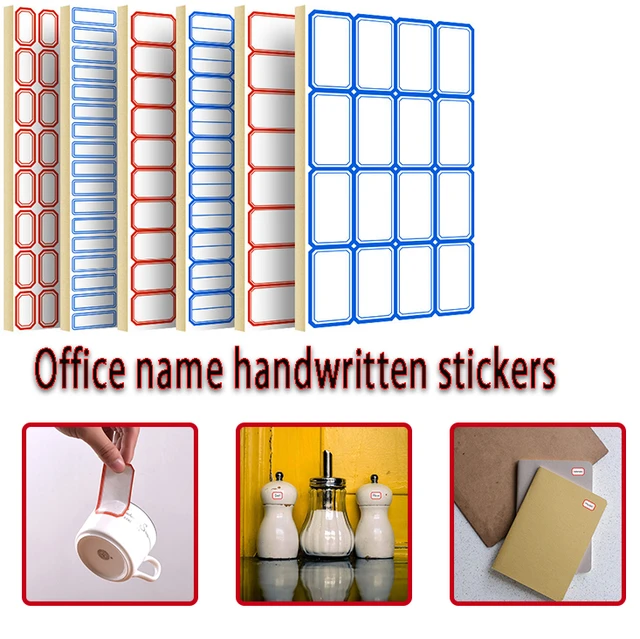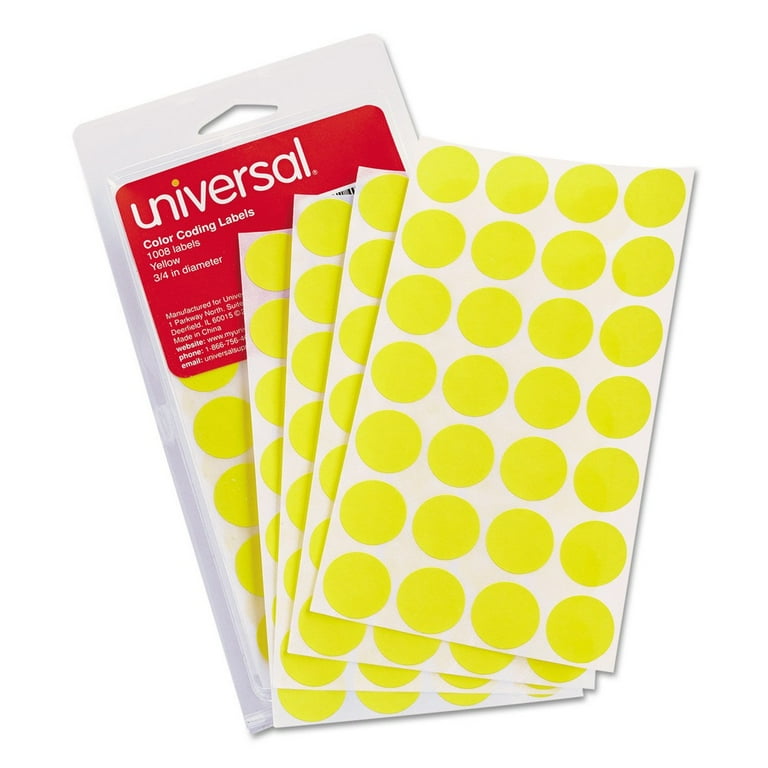Boost Branding with Personalized Self-Adhesive Labels Options
Wiki Article
Selecting the Right Self-Adhesive Labels for Your Company and Personal Demands
Selecting the proper self-adhesive tags for both business and personal applications needs a nuanced understanding of different aspects that influence their performance. Key factors to consider consist of the product's longevity, appropriate sizing for optimal exposure, and sticky stamina customized to details usage circumstances. In addition, the selection of finish and printing techniques can significantly affect appearances and functionality. As we check out these essential components, it ends up being clear that a strategic technique is vital to guarantee your labels not just satisfy assumptions yet likewise improve your general branding and company efforts. What specific difficulties do you deal with in this procedure?
Recognizing Tag Materials
When selecting self-adhesive tags, comprehending the various label materials is important to ensuring optimal efficiency and resilience. The choice of product straight influences the tag's look, durability, and functionality. Usual label products consist of paper, polyester, polypropylene, and plastic, each offering distinctive advantages and disadvantages.
Polyester labels use superior resilience, being immune to tearing, wetness, and UV light. This makes them a superb selection for industrial applications or items that need resilient labeling remedies (Self-Adhesive Labels). Polypropylene, while similar to polyester, is usually much less pricey and offers a great equilibrium of longevity and print top quality
Furthermore, consider sticky kinds-- irreversible, detachable, or repositionable-- relying on your certain needs. Ultimately, selecting the ideal label product is essential for accomplishing the wanted result, making sure that your labels do successfully in their intended settings.
Establishing the Right Dimension
Selecting the ideal size for self-adhesive tags is an essential step that matches the choice of tag products. The size of a tag can dramatically influence its functionality, exposure, and general effect. Consequently, it is essential to think about the desired use the tag when identifying its measurements.First of all, examine the details that requires to be shown. Tags consisting of more text or graphics will certainly need larger dimensions to make sure readability and visual charm. On the other hand, minimal layouts may benefit from smaller labels that keep a sleek visual.
Additionally, consider the surface on which the tag will be used. Various surface areas, such as bottles, envelopes, or boxes, may dictate specific dimension needs to optimize attachment and visibility.
Additionally, believe regarding the amount of labels required; larger labels might be more cost-effective for bulk printing.
Examining Adhesive Stamina
How can one make certain that self-adhesive tags remain securely attached in various conditions? Reviewing sticky stamina is essential for assuring that labels carry out optimally, whether in a regulated atmosphere or topic to severe temperatures, moisture, or various other elements. The adhesive's performance is typically identified right into three classifications: removable, long-term, and ultra-permanent. Each classification serves different applications, and comprehending the intended usage is essential.For example, removable adhesives are perfect for labels that may need to be rearranged or removed without residue, making them ideal for momentary applications. On the other hand, long-term adhesives are designed to endure numerous problems and give a solid bond, making them suitable for long-lasting labeling requirements.
Testing the sticky toughness can include peel attachment examinations, which measure the force called for to remove the label from a surface area. Eventually, choosing the best adhesive strength makes sure that self-adhesive labels accomplish their purpose, preserving stability and exposure throughout their desired life-span.
Picking the Right Finish
The surface of self-adhesive labels plays a considerable function in their total performance and appearance, enhancing the adhesive strength previously talked about (Self-Adhesive Labels). The choice read this of surface can impact not only the aesthetic impact of the label yet also its toughness and capability. Usual surfaces consist of matte, gloss, and semi-gloss, each serving different objectivesA matte coating supplies a non-reflective surface that is suitable for creating, making it appropriate for labels that need hand-written info. This coating likewise often tends to conceal fingerprints and spots, improving the label's appearance gradually.
On the other hand, a gloss coating offers a glossy, dynamic appearance that improves color saturation, making it ideal for marketing tags that need to stand out. Nonetheless, this finish may be much less suitable for writing, as it can smudge conveniently.
Semi-gloss finishes strike an equilibrium between the two, supplying a minor sheen while maintaining good writeability. In addition, think about factors such as wetness resistance and UV security, particularly for labels subjected to extreme settings. By carefully picking the appropriate finish, businesses and individuals can ensure their tags successfully convey their desired message while maintaining resilience.

Thinking About Printing Options
Examining check here printing alternatives is crucial for maximizing the efficiency of self-adhesive labels. The approach you select will dramatically influence the top quality and resilience of the end product. Self-Adhesive Labels. Usual printing techniques consist of digital, flexographic, and thermal transfer printing, each offering distinctive benefits and factors to considerDigital printing is ideal for brief runs and variable information, enabling fast turnaround times and personalization. This approach makes it possible for companies to generate tags with high-resolution graphics and complex layouts without sustaining significant setup expenses. Nevertheless, it might not be the most cost-efficient choice for larger amounts.
Flexographic printing, on the other hand, is fit for high-volume production. It makes use of adaptable relief plates to move ink onto numerous products, ensuring regular top quality throughout large batches. This technique is typically favored for its effectiveness and capability to publish on a vast array of substrates, consisting of those with special finishes.
Thermal transfer printing is visit here an additional feasible alternative, particularly for tags that require longevity against harsh conditions. This method supplies outstanding print quality and is commonly made use of for barcode and inventory labels.
Ultimately, picking the best printing option depends upon your particular labeling demands, spending plan, and production volume.
Verdict
In final thought, selecting the ideal self-adhesive tags requires mindful factor to consider of different elements, including tag materials, size, glue toughness, coating, and printing alternatives. Each element plays an important duty in making certain that the tags fulfill details organization or individual demands properly.When selecting self-adhesive tags, understanding the various label materials is important to making certain ideal performance and resilience.Choosing the ideal dimension for self-adhesive labels is an essential action that matches the option of tag products. Inevitably, choosing the best sticky strength makes certain that self-adhesive labels accomplish their objective, preserving honesty and presence throughout their designated lifespan.
The coating of self-adhesive labels plays a considerable function in their total performance and look, enhancing the adhesive stamina previously discussed.In final thought, choosing the ideal self-adhesive labels necessitates mindful consideration of different aspects, consisting of tag products, dimension, adhesive toughness, finish, and printing alternatives.
Report this wiki page